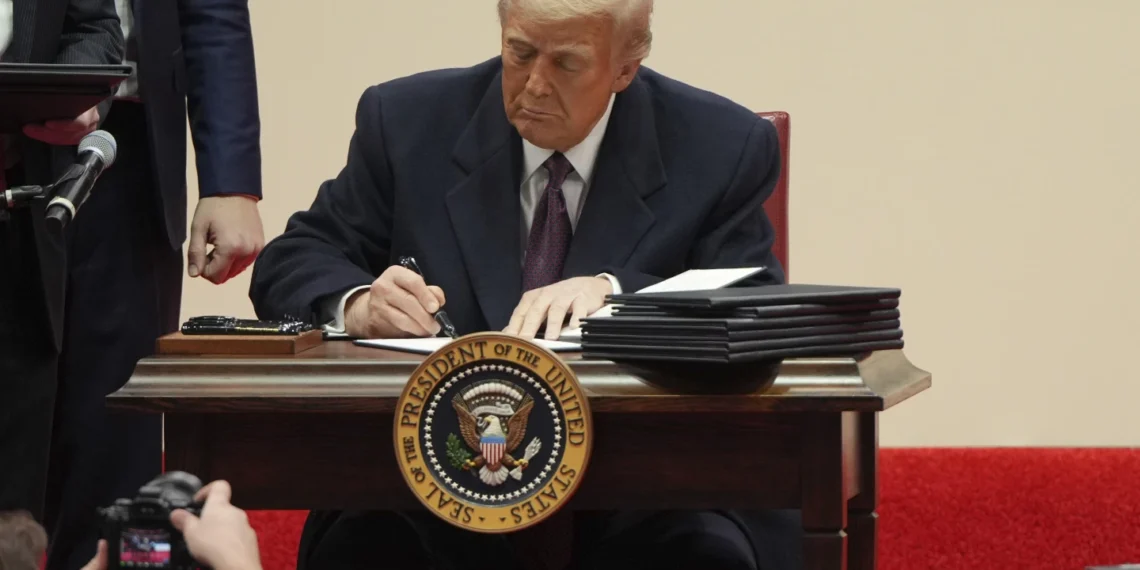By revoking Biden’s AI executive order, Trump aims to remove perceived barriers to innovation. However, experts warn that the absence of oversight could amplify national security risks and harm ordinary citizens.BY PC bureau
On his first day in office, President Donald Trump revoked a 2023 executive order signed by former President Joe Biden, aimed at reducing the risks artificial intelligence (AI) poses to consumers, workers, and national security. This decision could have far-reaching consequences for ordinary citizens, the economy, and the broader AI landscape, raising questions about the motivations behind the move and the potential risks it introduces.
What Biden’s AI Executive Order Addressed
Biden’s executive order mandated that developers of AI systems conduct rigorous safety tests and share the results with the U.S. government before releasing their products to the public. It aimed to prevent unintended consequences, such as the spread of biased algorithms, threats to national security, and harm to public safety. Additionally, the order tasked the National Institute of Standards and Technology (NIST) with drafting guidance to help companies identify and address flaws in their AI models, including systemic biases.
🏛️ Trump’s Day 0: Reverses Biden’s AI Order
Biden’s 111-page AI order is gone. The controversial use of the Defense Production Act for AI oversight has been scrapped.
Trump’s team, led by new Crypto & AI Czar David Sacks, hints at lighter-touch regulation. pic.twitter.com/W82Lx7Pt2l
— Ian Kar (@iankar_) January 21, 2025
These measures were designed to ensure that AI technology evolves responsibly while safeguarding the interests of ordinary people, such as preventing job displacement, mitigating potential discrimination in automated systems, and curbing risks to public health and safety.
Why Trump Revoked the Order
Trump’s decision to rescind the order was rooted in his administration’s focus on deregulation and fostering innovation without governmental oversight. Critics of Biden’s order argued that its requirements, such as safety test reporting, imposed undue burdens on AI developers and risked exposing proprietary trade secrets. During his campaign, Trump pledged to promote policies that support “AI development rooted in free speech and human flourishing,” though specifics remain unclear.By promoting a hands-off approach, the administration hopes to strengthen U.S. leadership in AI development. However, this decision could tilt the balance toward corporate interests, potentially at the expense of public welfare.
Trump btw instantly revoked Executive Order 14110 – "Executive Order on Safe, Secure, and Trustworthy Development and Use of Artificial Intelligence"https://t.co/dR0abE5Lp3 pic.twitter.com/XEwRFOp44d
— Roope Rainisto (@rainisto) January 21, 2025
Potential Risks to Common People
The revocation of Biden’s executive order introduces several risks:
- Increased Exposure to Biased AI Systems: Without mandatory safety testing and government oversight, there is a greater chance that AI systems will perpetuate biases, leading to unfair treatment in areas like hiring, lending, or law enforcement.
- Public Safety Concerns: Generative AI, which can produce text, images, and videos, could be used maliciously to create deepfakes, spread misinformation, or automate cyberattacks, with fewer safeguards in place to prevent misuse.
- Job Displacement and Economic Uncertainty: Generative AI’s rapid adoption has already raised concerns about its potential to make certain jobs obsolete. Without oversight, these disruptions may occur more unpredictably, leaving workers unprepared.
- National Security Risks: By removing the requirement for safety reporting, AI systems with potential security vulnerabilities could be deployed, exposing the nation to cyber threats or misuse by hostile actors.
Implications for the Future
Trump’s decision to revoke Biden’s AI safeguards could redefine the trajectory of AI development in the U.S., opening the door for rapid innovation but also significant risks. The move underscores the importance of finding a comprehensive, bipartisan approach to managing the risks and benefits of AI—a task that will likely remain a contentious issue in years to come.













